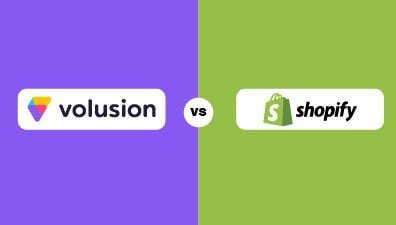In this comprehensive comparison, we will delve deep into the intricacies of WooCommerce and Shopify, examining their core features, pricing structures, ease of use, customization capabilities, SEO and marketing tools, payment gateways, security measures, and customer support. By the end of this blog post, you will have a clear understanding of which platform aligns best with your business needs and goals.
Whether you are a startup seeking to establish your first online presence or an established business looking to switch platforms, this detailed analysis will provide the insights necessary to make an informed decision. Join us as we explore the strengths and weaknesses of WooCommerce and Shopify, helping you choose the ideal eCommerce solution to propel your business forward.
Table of Contents
WooCommerce vs Shopify: An overview
But before we go in-depth into comparisons, we need to know the basics and highlights of two eCommerce platforms, what makes them different from each other and other platforms?
Shopify – What makes it unique?
Shopify, founded in 2006 by Tobias Lütke, Daniel Weinand, and Scott Lake, is a leading eCommerce platform designed to help businesses of all sizes build and manage their online stores. Unlike WooCommerce, Shopify is a hosted solution, meaning it takes care of all the technical aspects of running an online store, including hosting, security, and software updates. This makes Shopify a user-friendly option for those who prefer a hands-off approach to the technical side of eCommerce.

Shopify provides a comprehensive suite of tools and features to help businesses create professional online stores quickly and efficiently. Its intuitive drag-and-drop interface allows users to design their store without any coding knowledge. Shopify also offers a wide range of themes and apps, enabling users to customize their store’s appearance and functionality to align with their brand and business goals.
One of the standout features of Shopify is its scalability. Whether you are a small startup or a large enterprise, Shopify can accommodate your needs with its tiered pricing plans and robust infrastructure. Shopify also integrates seamlessly with various sales channels, including social media platforms, marketplaces, and brick-and-mortar stores, allowing businesses to reach a broader audience.
We’ve written about Shopify and how to start a Shopify store before. Briefly, Shopify is an all-in-one eCommerce platform that helps you create an online store without coding experience and offers all the necessary tools to establish, manage and grow an online business. With multiple tiers and standalone, premium versions, Shopify can cover all types of eCommerce businesses. It also has its own app store for you to equip numerous extra functionalities.
With Shopify, you don’t need to worry about technical aspects of creating an eCommerce website such as hosting, domain, coding, security… With no free plan, Shopify passively guarantees that the platform will bring eCommerce success to your business.
WooCommerce – What distinguishes it from other eCommerce platforms?
WooCommerce, launched in 2011 by WooThemes and later acquired by Automattic, is an open-source eCommerce plugin specifically designed for WordPress. As a powerful and flexible tool, WooCommerce allows users to turn their WordPress websites into fully functional online stores. Being open-source, WooCommerce offers unparalleled customization options, enabling developers and store owners to tailor every aspect of their eCommerce site to meet specific needs.
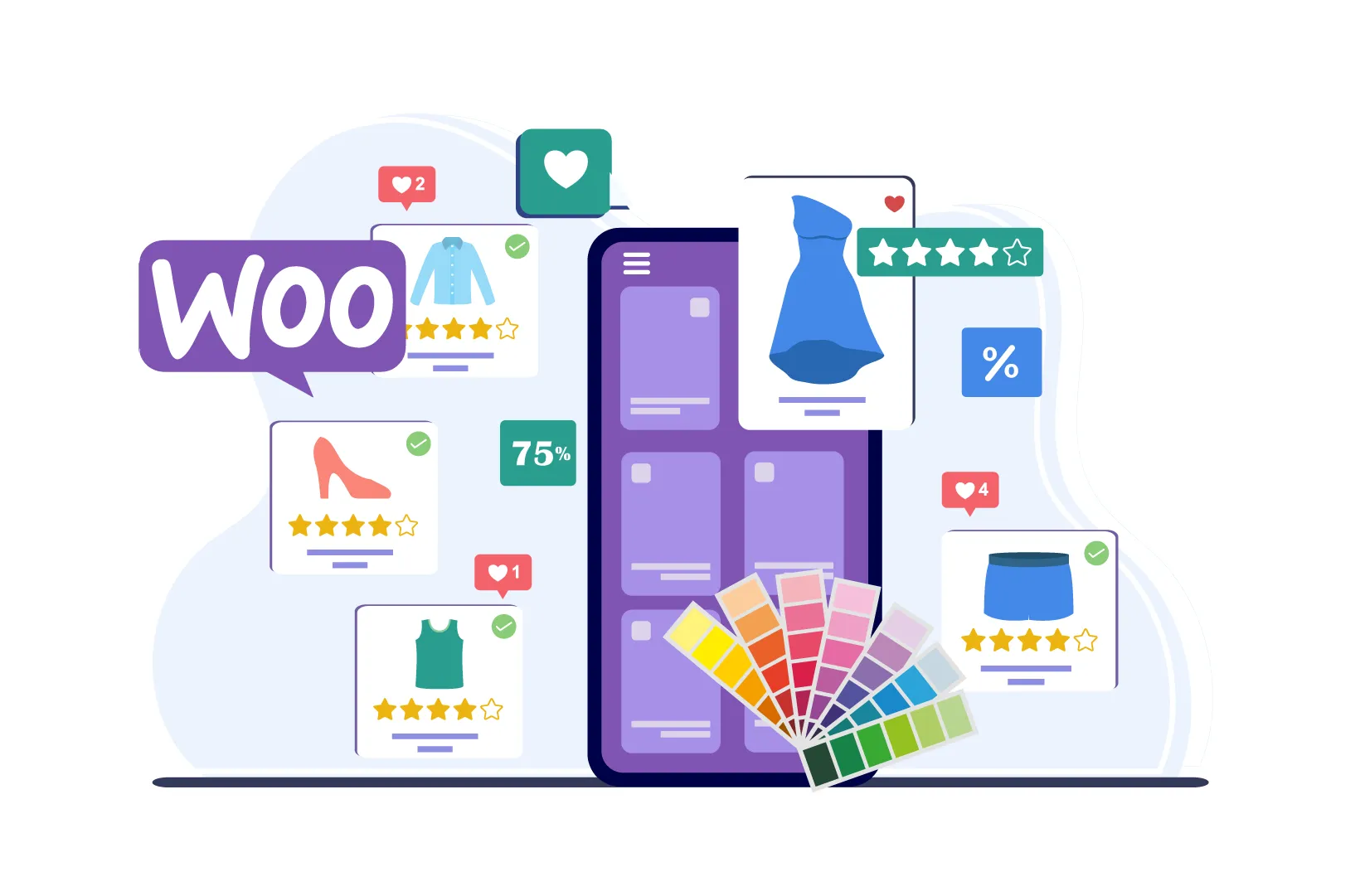
WooCommerce is an open-source plugin built for WordPress and it’s free. For beginners, starting your online stores with WooCommerce will be a bit trickier than starting with Shopify: you need a hosted website and of course, you need to have WordPress installed, too. With many more barriers, the fact that WooCommerce is the most popular eCommerce platform in the world, more popular than Shopify, is certainly note-worthy.
The deciding factor for this fact is that WordPress is the most popular website platform now, as it is the best content management system. If you are already used to working on WordPress, WooCommerce may be your best option. It offers you the perfect familiarity while trying to run your first online store if you are already working on WordPress websites. Moreover, based on the nature of the open-source platform, you can customize every aspect of your store and add custom extensions easily (something Shopify can’t, we’ll discuss in detail later).
Target Audience and Primary Use Cases for Each Platform
When comparing Shopify vs WooCommerce, it’s essential to consider the target audience and primary use cases for each platform. Understanding these factors will help you determine which platform is the best fit for your specific business needs.
WooCommerce
WooCommerce is particularly well-suited for businesses that already have a WordPress website or are familiar with the WordPress ecosystem. Its open-source nature makes it an excellent choice for developers and businesses with specific customization needs. WooCommerce’s flexibility allows for extensive modifications and integrations, making it ideal for businesses that require a tailored eCommerce solution.
Primary use cases for WooCommerce include:
- Small to medium-sized businesses that need a customizable and scalable eCommerce platform.
- Developers and tech-savvy users who want full control over their online store’s design and functionality.
- Businesses with existing WordPress sites looking to add eCommerce capabilities.
- Niche markets that require unique features or custom-built functionalities.
Shopify
Shopify, on the other hand, caters to users who prefer an easy-to-use, all-in-one solution for their eCommerce needs. Its hosted nature eliminates the need for technical maintenance, making it an attractive option for entrepreneurs and small business owners without a technical background. Shopify’s intuitive interface and comprehensive support make it accessible for users of all skill levels.
Primary use cases for Shopify include:
- Startups and small businesses looking to launch their online stores quickly and efficiently.
- Non-technical users who want to avoid the complexities of hosting and maintaining an eCommerce site.
- Growing businesses that need a scalable solution capable of handling increased traffic and sales volumes.
- Multi-channel retailers looking to integrate their online store with various sales channels, including social media and marketplaces.
In the Shopify vs WooCommerce debate, the choice ultimately depends on your specific business requirements, technical expertise, and long-term goals. WooCommerce offers unparalleled customization and flexibility, making it ideal for businesses with unique needs and technical resources. Shopify provides a user-friendly, scalable solution perfect for businesses seeking a hassle-free eCommerce experience. By understanding the strengths and target audiences of each platform, you can make an informed decision that aligns with your business objectives.
Overall eCommerce Capabilities
When it comes to evaluating Shopify vs WordPress for eCommerce capabilities, the two platforms offer distinct approaches and features tailored to different needs. Understanding their respective strengths can help determine which platform is best suited for your online store.
Built-in eCommerce Features
WooCommerce: Plugins of WordPress
WordPress relies on plugins to add eCommerce features to a WordPress site. WooCommerce is the most popular and comprehensive eCommerce plugin for WordPress, providing a robust set of tools to create and manage an online store.
WooCommerce transforms a standard WordPress site into a fully functional online store. It supports a wide range of product types, including physical goods, digital downloads, and subscriptions. With WooCommerce, users can set up product categories, product attributes, and pricing options. The plugin also offers extensive customization for product pages, checkout processes, and shopping carts.
WooCommerce provides the flexibility to extend functionality, but managing eCommerce through plugins requires additional configuration and maintenance. Users need to ensure compatibility between plugins, manage updates, and handle any potential conflicts that may arise.
Shopify: Native eCommerce Functionalities
In contrast, Shopify is a dedicated eCommerce platform that offers native eCommerce functionalities right out of the box. From the moment users create their Shopify store, they gain access to a wide array of built-in eCommerce features designed to streamline online selling.
Shopify’s native eCommerce capabilities include product management, order processing, and customer management. Users can easily add products, set up product variants, manage pricing, and organize products into collections. Shopify also provides a range of built-in tools for creating discount codes, managing inventory, and handling tax settings.
Shopify’s focus on eCommerce ensures that its platform is optimized for selling online. Features such as abandoned cart recovery, automated email marketing, and integrations with various sales channels enhance the overall eCommerce experience. Shopify’s built-in analytics and reporting tools provide insights into sales performance, customer behavior, and store traffic, allowing users to make data-driven decisions.
Product Management
WooCommerce: Managing Products
WooCommerce provides a comprehensive set of tools for managing products within a WordPress site. Users can create and manage various types of products, including simple products, variable products with different attributes, and grouped products.

WooCommerce allows users to organize products into categories and tags, making it easier for customers to navigate the store. The plugin also supports product variations, such as different sizes or colors, and provides options for setting up product attributes and custom fields.
Additionally, WooCommerce includes features for managing product inventory, setting up product images and galleries, and adding product reviews. Users can also leverage extensions to enhance product management, such as plugins for advanced product filtering or bulk product editing.
Shopify: Streamlined Product Management
Shopify simplifies product management with its intuitive interface and built-in tools. Users can quickly add products, set up variants, and organize products into collections. The platform supports various product types, including physical goods, digital products, and services.
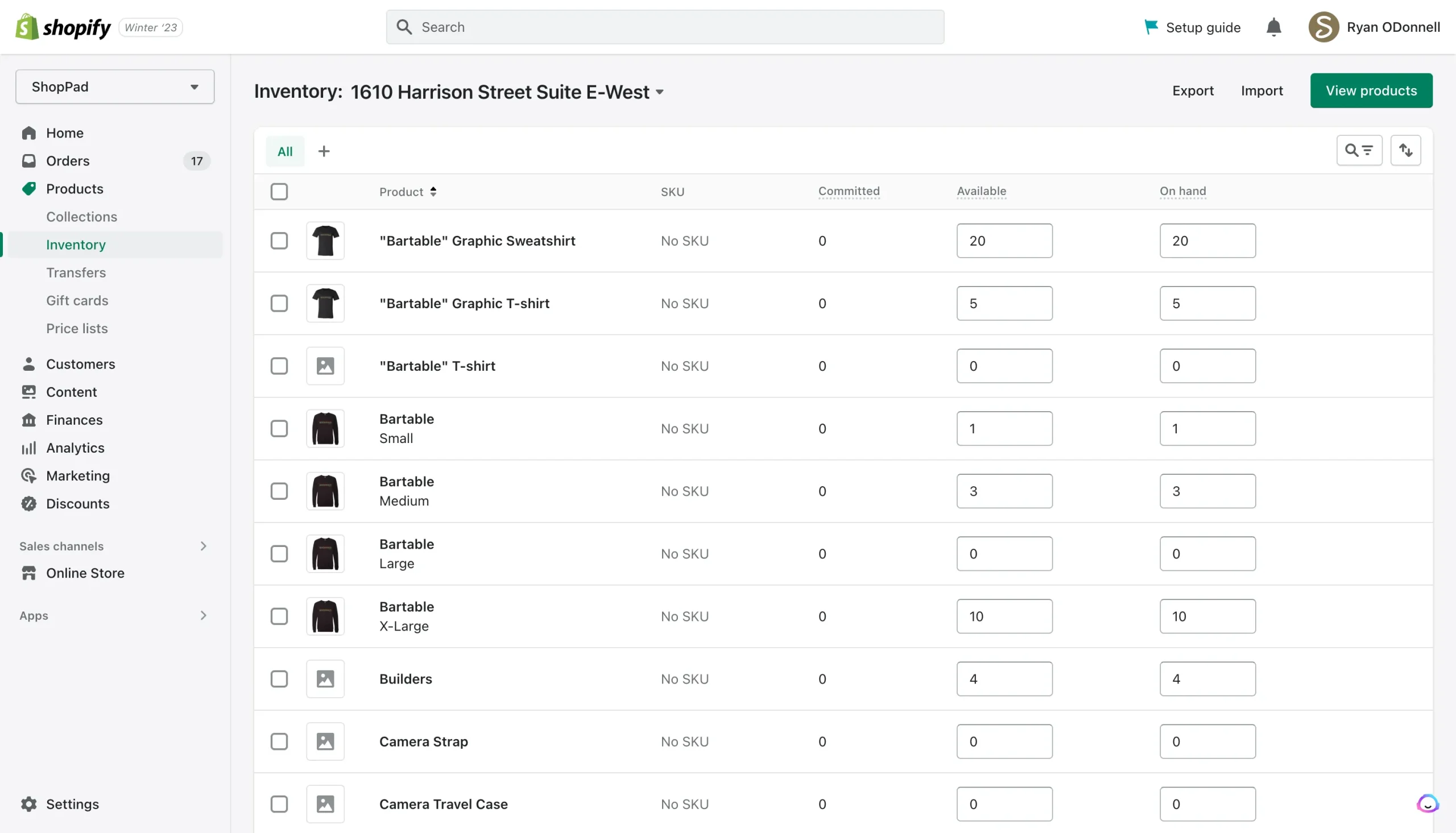
Shopify’s product management features include options for setting up product titles, descriptions, images, and pricing. Users can manage inventory levels, track stock quantities, and set up notifications for low stock. Shopify also provides tools for creating product tags and organizing products into collections, making it easy for customers to browse and find what they’re looking for.
Shopify’s streamlined product management process is designed to be user-friendly, allowing store owners to efficiently manage their inventory and product listings without the need for extensive technical knowledge.
Inventory Tracking
WooCommerce: Inventory Management
WooCommerce offers a range of features for managing inventory. Users can set up inventory tracking for each product, including stock quantities, low stock alerts, and backorder options.
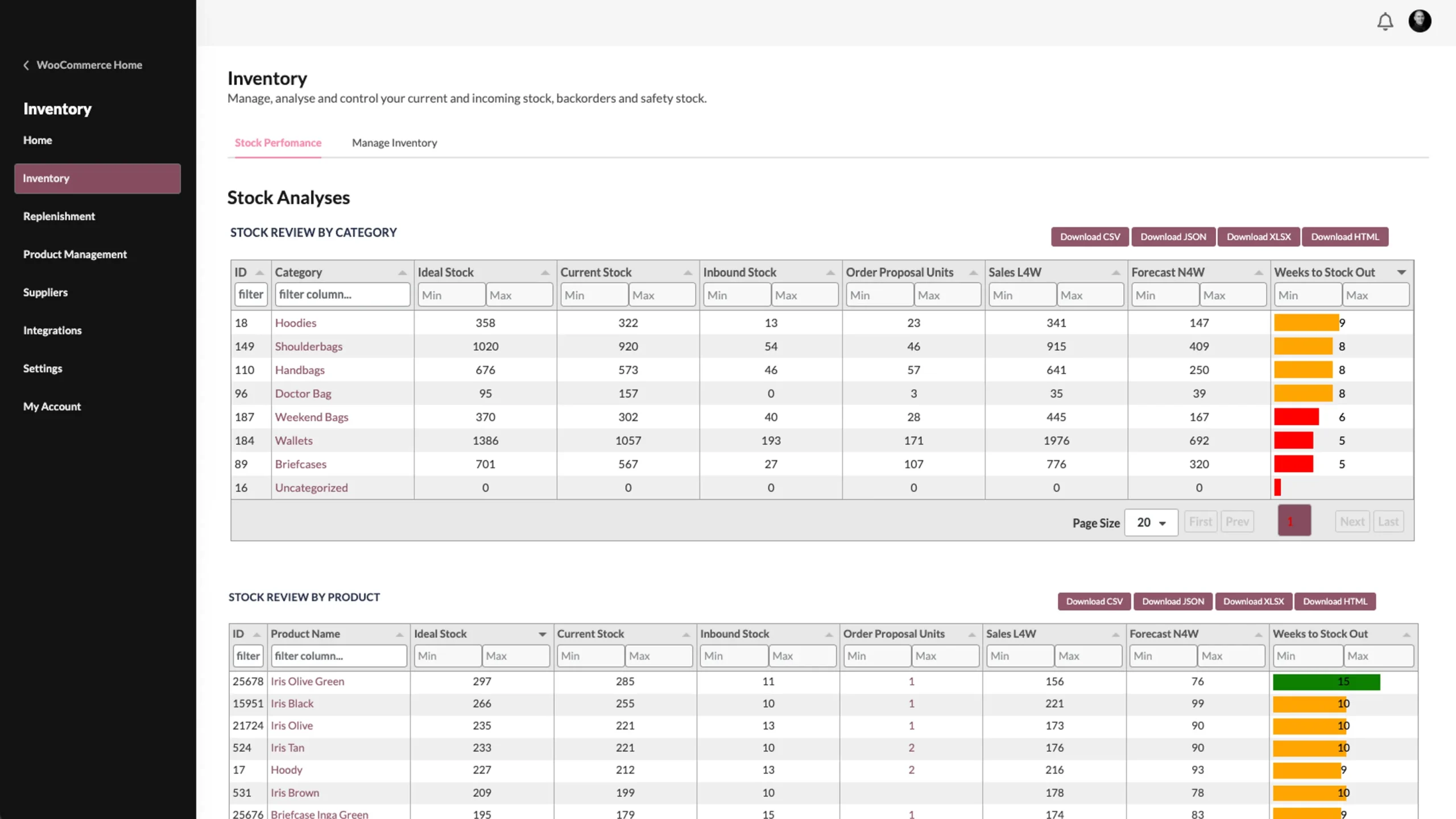
WooCommerce provides options to manage stock status, such as in stock, out of stock, or on backorder. Users can also set up stock management at the product level and monitor inventory through the WooCommerce dashboard. Additionally, extensions and plugins are available to enhance inventory management, such as tools for tracking inventory across multiple locations or integrating with third-party inventory management systems.
Shopify: Advanced Inventory Tracking
Shopify excels in inventory tracking with its built-in tools and features. The platform provides real-time inventory updates, allowing users to monitor stock levels and manage inventory across multiple sales channels. Shopify’s inventory management system includes features for setting up inventory tracking, managing stock levels, and receiving notifications for low stock.
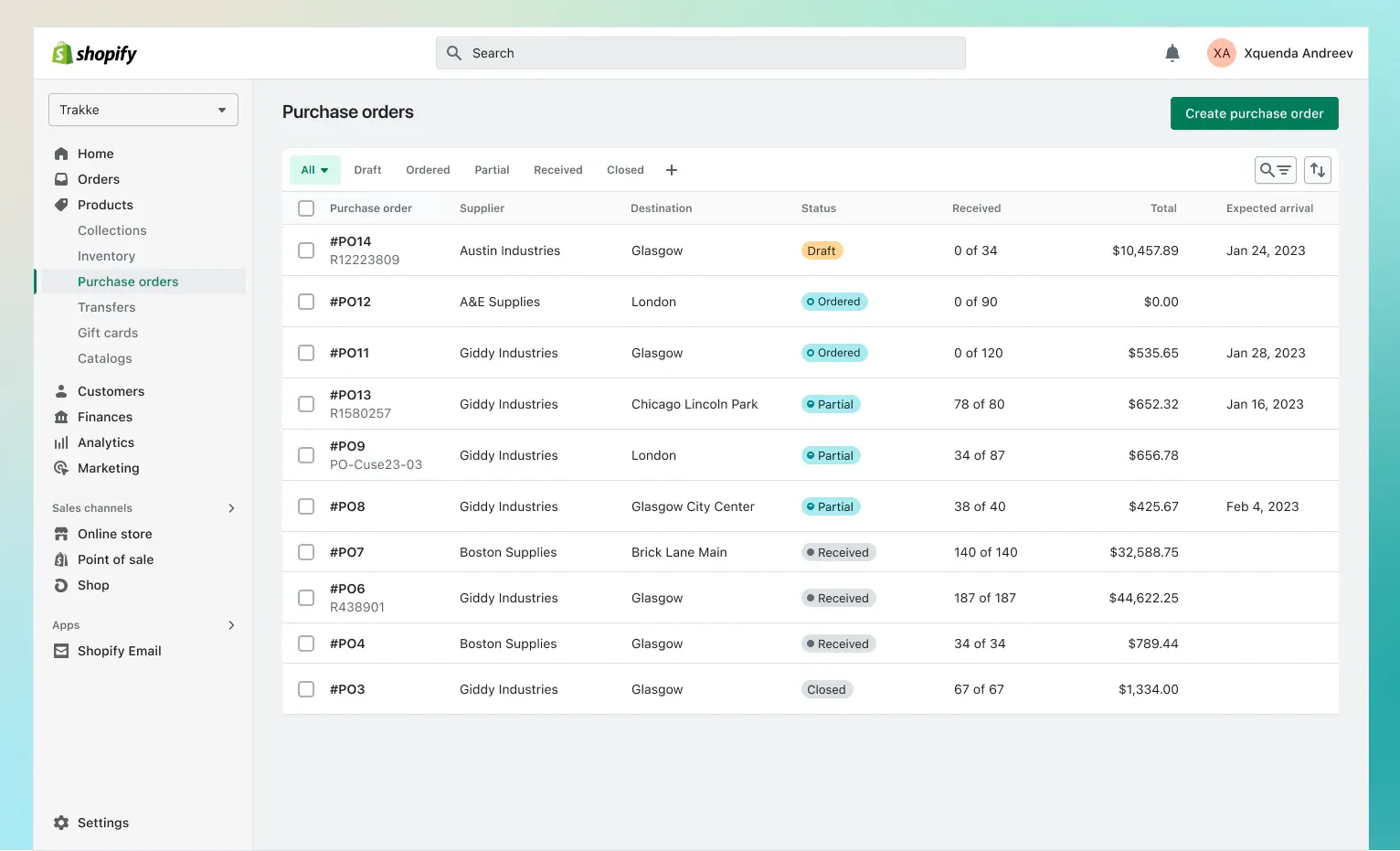
Shopify also offers advanced inventory features, such as inventory tracking by location and automatic stock updates for online and offline sales. Users can manage inventory for physical stores, warehouses, and dropshipping suppliers from a single interface. Shopify’s inventory reports and analytics provide insights into stock levels, sales trends, and inventory performance.
Payment Gateways and Transaction Fees
WooCommerce: Payment Gateways
WooCommerce provides flexibility by supporting various payment gateways through extensions. Users can integrate popular payment processors such as PayPal, Stripe, Authorize.Net, and Square.
WooCommerce also supports offline payment methods like bank transfers and cash on delivery. Users can choose the payment gateways that best suit their needs and configure payment settings within the WooCommerce settings panel.
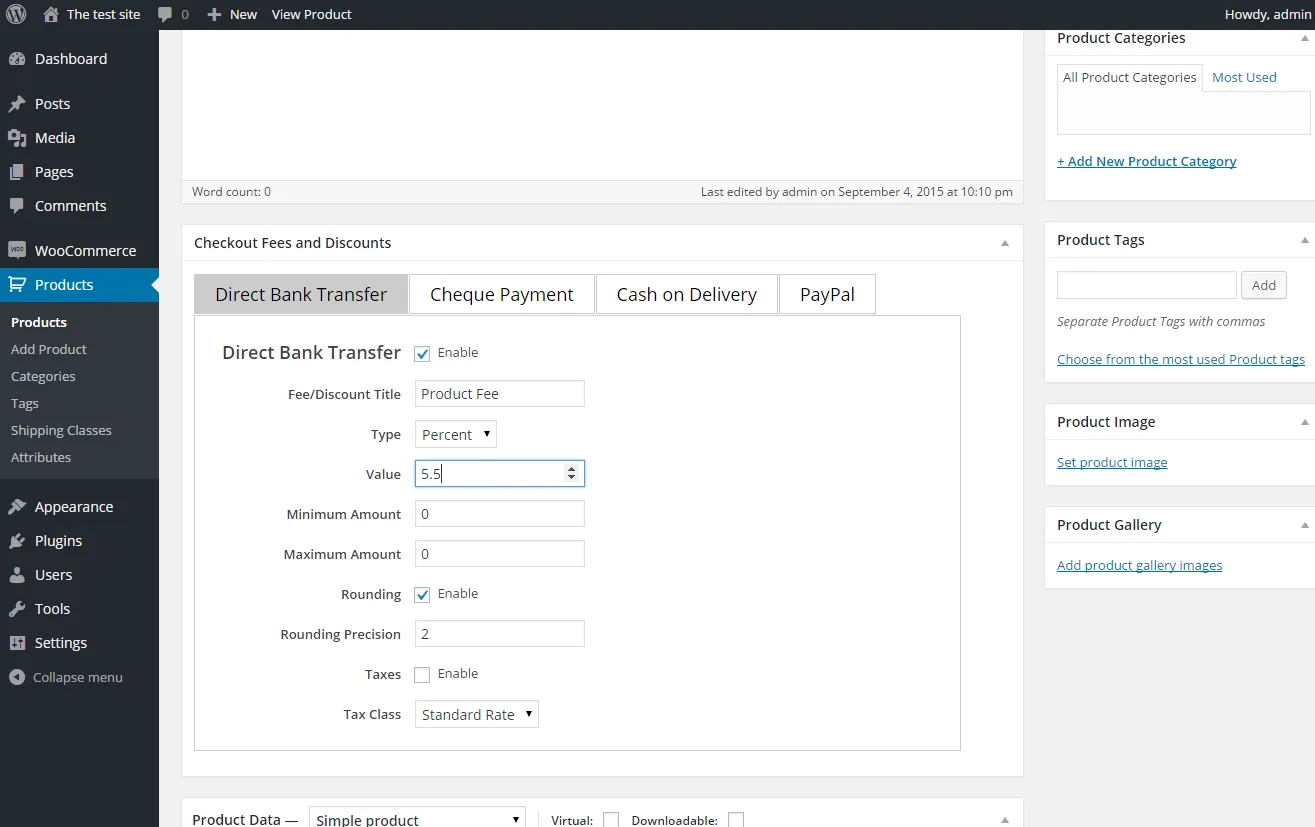
It’s important to note that while WooCommerce itself is free, payment gateways often charge transaction fees. Additionally, users must consider the costs associated with their chosen hosting provider and any additional extensions or plugins required for payment processing.
Shopify: Built-in Payment Options
Shopify has numerous payment gateway options for customers to use and offers built-in payment processing through Shopify Payments, which integrates seamlessly with the platform. Shopify Payments supports major credit and debit cards and provides a streamlined checkout experience for customers. By using Shopify Payments, users can avoid third-party transaction fees and benefit from competitive processing rates.
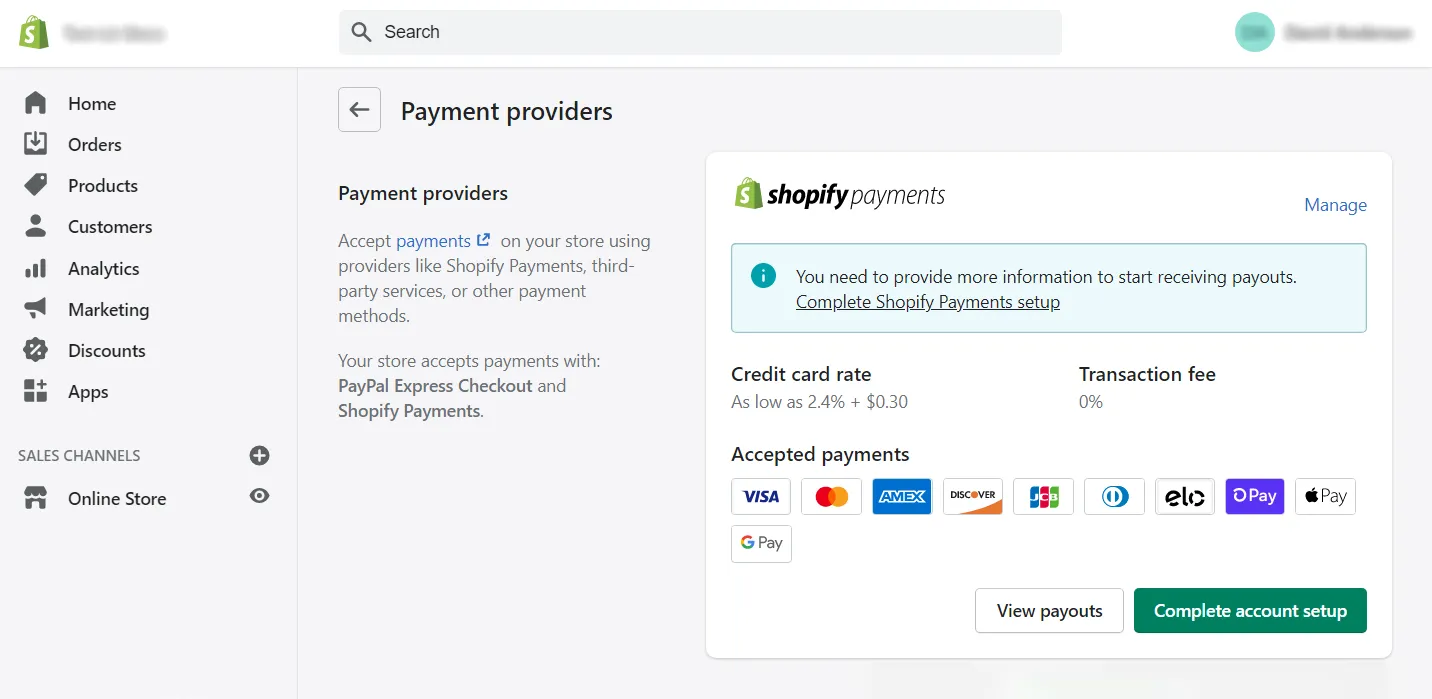
Shopify also supports a wide range of third-party payment gateways, including PayPal, Stripe, and Authorize.Net. Users can choose to enable multiple payment options to accommodate different customer preferences. Shopify provides transparent pricing and fee structures, with clear information on transaction fees and payment processing rates.
Shipping Options and Management
WooCommerce: Shipping
WooCommerce provides a range of shipping features through its core functionality and extensions. Users can set up shipping zones, define shipping rates based on location, weight, or dimensions, and offer various shipping methods.
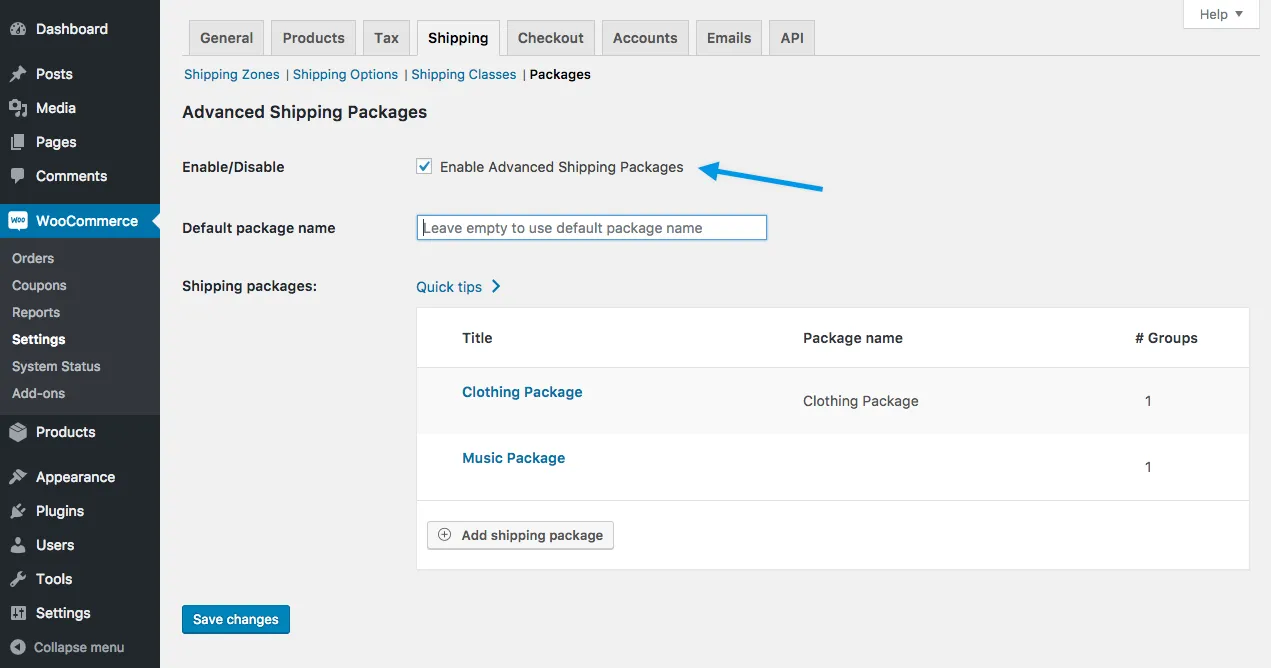
WooCommerce supports integrations with major shipping carriers, such as USPS, UPS, and FedEx, allowing users to offer real-time shipping rates and print shipping labels directly from the dashboard. Additional extensions are available for advanced shipping features, such as local delivery, pickup options, and international shipping.
Shopify: Comprehensive Shipping Solutions
Shopify offers comprehensive shipping solutions designed to simplify the shipping process. The platform provides built-in tools for managing shipping rates, tracking orders, and handling fulfillment. Users can set up shipping zones, create shipping rates based on weight or price, and offer multiple shipping options to customers.
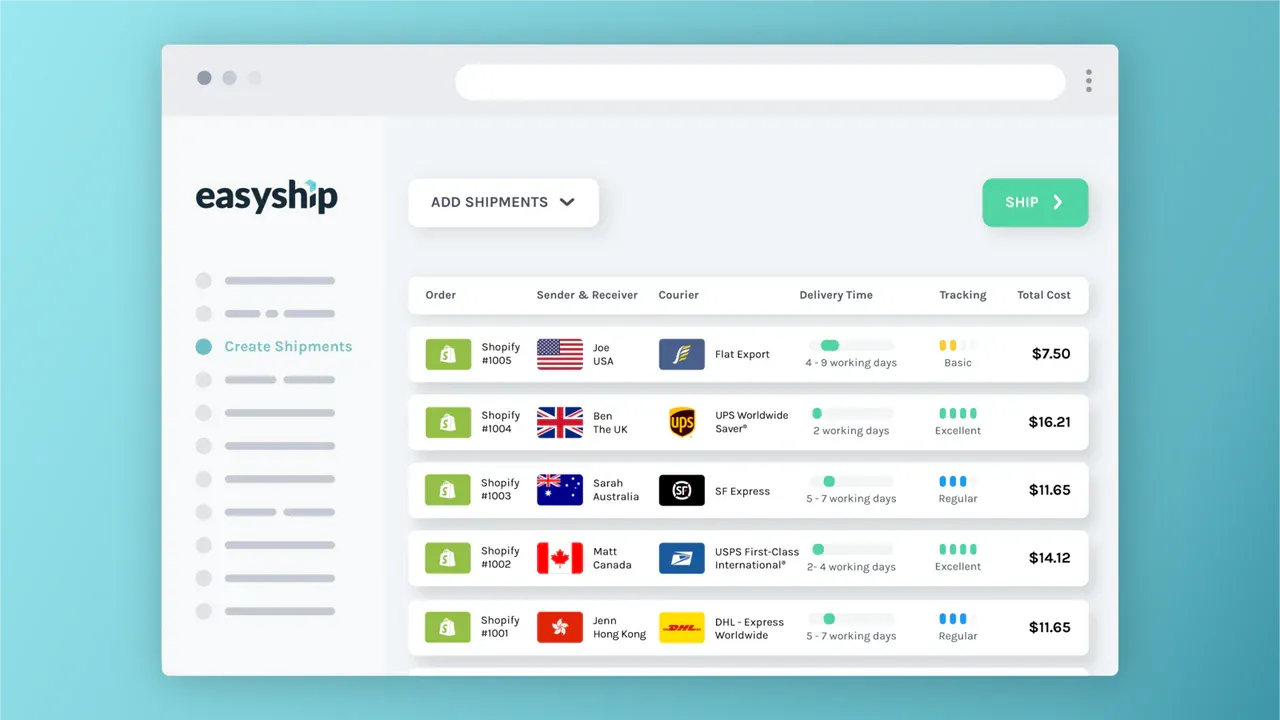
Shopify’s integration with major shipping carriers allows users to access discounted shipping rates, print shipping labels, and track shipments directly from the dashboard. The platform also supports features like automated shipping calculations, real-time tracking, and seamless integration with third-party fulfillment services.
Detailed features WooCommerce vs Shopify
Ease of use
How user-friendly an eCommerce platform is can greatly influence the experience of setting up and managing an online store, particularly for users with varying levels of technical expertise. In this section, we will explore the ease of use of both Shopify and WooCommerce in detail.
Shopify
Shopify is renowned for its intuitive and user-friendly interface, designed to make the process of creating and managing an online store as straightforward as possible. Here’s a detailed look at why Shopify is considered easy to use:
- Setup and Onboarding: Shopify offers a seamless and guided setup process that helps users get their store up and running quickly. From the moment you sign up, Shopify provides step-by-step instructions and prompts to configure your store settings, add products, and choose a theme. This is particularly beneficial for users who are new to eCommerce or do not have a technical background.
- User Interface: The Shopify dashboard is clean, well-organized, and easy to navigate. It centralizes all the essential functions such as adding products, managing orders, and viewing analytics. The layout is designed to minimize the learning curve, allowing users to focus on building their store without getting bogged down by complex menus and settings.
- Themes and Customization: Shopify provides a wide range of professionally designed themes that are easy to customize. The drag-and-drop editor allows users to modify their store’s appearance without needing to write any code. While advanced customization options are available for those who have coding skills, the platform is designed so that anyone can create a visually appealing store with minimal effort.
- App Integration: Integrating additional functionalities into a Shopify store is straightforward thanks to the extensive Shopify App Store. Users can browse, install, and configure apps with just a few clicks, adding features such as email marketing, social media integration, and customer reviews without needing technical expertise.
- Support and Resources: Shopify offers 24/7 customer support through various channels, including live chat, email, and phone. Additionally, the platform provides a wealth of resources, including tutorials, guides, and a community forum, making it easier for users to find answers and solutions to any issues they encounter.
In summary, Shopify’s design philosophy prioritizes ease of use, making it an excellent choice for entrepreneurs and small business owners who want to launch and manage their online stores without dealing with the technical complexities often associated with eCommerce platforms.
WooCommerce
WooCommerce, as a plugin for WordPress, offers a different approach to ease of use, focusing on flexibility and customization. Here’s a detailed look at the ease of use for WooCommerce:
- Setup and Onboarding: Setting up WooCommerce involves a few more steps compared to Shopify. Users need to have a WordPress site before installing the WooCommerce plugin. Once the plugin is activated, WooCommerce provides a setup wizard that guides users through the basic configuration, such as setting up payment gateways, shipping options, and adding products. However, this process may require some familiarity with WordPress.
- User Interface: The WooCommerce interface integrates seamlessly with the WordPress dashboard, which can be both an advantage and a challenge. For users already familiar with WordPress, managing a WooCommerce store will feel intuitive. However, for those new to WordPress, the interface might seem less straightforward compared to Shopify’s dedicated dashboard.
- Themes and Customization: WooCommerce offers extensive customization options through WordPress themes and plugins. Users can choose from thousands of free and premium themes specifically designed for WooCommerce. Customizing these themes often requires knowledge of WordPress and sometimes basic coding skills, which can be a barrier for users seeking a more straightforward solution.
- Plugin Integration: The true power of WooCommerce lies in its flexibility and the vast array of plugins available in the WordPress ecosystem. While this provides tremendous potential for customization, it can also lead to complexity. Users need to ensure that the plugins they choose are compatible and do not conflict with each other, which might require a certain level of technical understanding.
- Support and Resources: WooCommerce has a strong community and extensive documentation, offering a wealth of tutorials, forums, and guides. However, support is generally community-based unless users purchase premium extensions or themes that include dedicated support. This means users may need to rely more on self-help resources compared to Shopify’s direct support channels.
In conclusion, WooCommerce offers unmatched flexibility and customization potential, making it an ideal choice for businesses that require a tailored solution and have the technical resources to manage it. However, this flexibility comes with a steeper learning curve compared to Shopify, which is designed for ease of use and simplicity
Overall evaluation
Shopify is undoubtedly the easier eCommerce platform to use. They guide you through every step of creating your store, from adding products to publishing content. With Shopify, you can be confident that you won’t make any major mistakes as you build your online store. Additionally, they take care of hosting for you so you don’t have to worry about a thing!
WooCommerce is easy to set up too but you need to consider some steps before starting your store. These steps include installing or updating your WordPress on your website and installing the WooCommerce plugin. It can be a bit overwhelming for your first time.
When comparing Shopify vs WooCommerce in terms of ease of use, the decision largely depends on the user’s technical expertise and specific business needs. Shopify provides a more user-friendly experience, ideal for those who want a quick and easy setup. WooCommerce, while more complex, offers greater flexibility and customization for users who are comfortable with WordPress and technical configurations.
Pricing
Shopify
Shopify operates on a subscription-based pricing model, offering several plans to accommodate businesses of varying sizes and needs. Shopify offers three pricing plans to suit your needs and budget. Therefore, it’s easy to track your spending:
- Basic Shopify: $39/month
The Basic plan includes all the essentials needed to set up an online store, such as an online store with unlimited products, two staff accounts, 24/7 support, sales channels (including online marketplaces and social media), and a free SSL certificate. It also provides basic reports, discount codes, and manual order creation. - Shopify: $105/month
The Shopify plan offers everything in the Basic plan, plus five staff accounts, professional reports, and lower transaction fees. It also includes features like gift cards and more advanced reporting capabilities, which are beneficial for growing businesses. - Advanced Shopify: $399/month
The Advanced plan includes all the features of the Shopify plan, along with 15 staff accounts, advanced report builder, third-party calculated shipping rates, and even lower transaction fees. This plan is ideal for larger businesses that require more advanced features and reporting tools. - Shopify Plus: Starting at $2000/month
Shopify Plus is an enterprise-level solution tailored for high-volume businesses. It offers advanced customization, enhanced support, and additional features such as dedicated account management, higher-level automation tools, and custom integrations.
Additional Costs:
- Transaction Fees: Shopify charges a transaction fee for each sale made through the platform unless you use Shopify Payments. The fees range from 2.9% + 30¢ per transaction on the Basic plan to 2.4% + 30¢ per transaction on the Advanced plan.
- Apps and Themes: While Shopify’s App Store offers many free apps and themes, premium options are available at an additional cost. These can add functionality to your store but can also increase overall expenses.
- Domain Registration: Shopify allows you to purchase a domain through its platform, typically costing between $11 and $14 per year.
Overall, Shopify’s pricing is straightforward and includes hosting, security, and maintenance in its subscription plans. This all-in-one approach can simplify budgeting and operational management for businesses.
WooCommerce
WooCommerce itself is a free plugin for WordPress, but building and maintaining a WooCommerce store involves several costs. Here’s a detailed look at the various expenses associated with using WooCommerce:
- WordPress Hosting: Hosting is a necessary expense for WooCommerce users, as it is a self-hosted platform. Costs can vary widely depending on the provider and plan. Basic shared hosting plans can start as low as $5/month, but for better performance and scalability, managed WordPress hosting plans range from $20 to $50/month or more.
- Domain Name: Like Shopify, you will need a domain name for your WooCommerce store. Domain registration typically costs from $10 to $15/year, though prices can vary based on the domain registrar and domain extension.
- SSL Certificate: Security is crucial for eCommerce sites. Many hosting providers include a free SSL certificate, but if not, purchasing one can cost around $10 to $100/year.
- Themes: WooCommerce offers a range of free and premium themes. Free themes can provide basic functionality and design, but premium themes, which offer more advanced features and customization options, typically range from $30 to $100 one-time fees.
- Plugins: To add specific functionalities to your WooCommerce store, you may need to install plugins. While many plugins are free, premium plugins can cost anywhere from $20 to $100 or more annually. Some essential plugins might include payment gateways, SEO tools, and advanced shipping options.
- Development and Customization: If you require extensive customization or additional features, you may need to hire a developer. Development costs can vary greatly, but freelance developers typically charge between $30 to $150/hour. Custom development projects can range from a few hundred to several thousand dollars, depending on the complexity.
- Transaction Fees: Unlike Shopify, WooCommerce does not charge transaction fees. However, you will still incur fees from your payment gateway provider. For example, PayPal and Stripe charge around 2.9% + 30¢ per transaction.
Additional Costs
- Maintenance and Updates: Running a WooCommerce store requires ongoing maintenance, including software updates, backups, and security measures. While these tasks can be managed independently, they might require additional time or the help of a professional, adding to the overall cost.
In summary, while WooCommerce itself is free, the total cost of ownership depends on various factors, including hosting, domain registration, SSL certificates, themes, plugins, and potential development fees. WooCommerce offers flexibility in choosing and controlling costs, but it can be less predictable compared to Shopify’s straightforward subscription model.
Overall Evaluation
When comparing Shopify vs WooCommerce in terms of pricing, Shopify offers a clear and predictable subscription-based pricing model that includes hosting, security, and maintenance. This can simplify budgeting and make it easier for businesses to manage their expenses. On the other hand, WooCommerce provides greater flexibility and potential cost savings through its open-source nature, but it requires careful planning and management of various individual costs.
At first, WooCommerce appears to be cheaper because it is free. However, when you factor in other costs such as web hosting, the domain name, premium themes, extension fees , plug-ins, and custom coding, it can become quite expensive.
Businesses should consider their specific needs, technical expertise, and long-term goals when deciding between Shopify and WooCommerce. For those who prefer an all-in-one solution with less hassle, Shopify might be the better choice. Conversely, for those who seek flexibility and customization and are willing to manage the associated complexities, WooCommerce could offer a more tailored and potentially cost-effective solution.
Initial Setup and Implementation
Shopify
Shopify is designed to be user-friendly, offering a streamlined setup process that allows users to launch their online stores quickly. Here’s a detailed look at the initial setup and implementation process for Shopify:
- Sign-Up Process: Getting started with Shopify begins with signing up for an account. The process is straightforward, requiring only basic information such as your email address, password, and store name. Shopify offers a 14-day free trial, allowing you to explore the platform and its features before committing to a paid plan.
- Setup Wizard: Once you’ve signed up, Shopify guides you through the initial setup with a helpful wizard. This step-by-step guide covers essential tasks such as selecting a theme, adding products, setting up payment gateways, and configuring shipping options. The wizard is designed to ensure you don’t miss any critical steps, making the setup process as smooth as possible.
- Theme Selection and Customization: Shopify offers a range of free and premium themes that you can easily browse and select from the theme store. Once you choose a theme, you can customize it using Shopify’s intuitive drag-and-drop editor. This editor allows you to modify the layout, colors, fonts, and other design elements without any coding knowledge. Advanced users can also access the theme’s code for more in-depth customization.
- Adding Products: Adding products to your Shopify store is a simple process. The product management interface is user-friendly, allowing you to enter product details, upload images, set prices, and configure inventory settings with ease. Shopify also supports bulk product uploads via CSV files, which can save time if you have a large catalog.
- Payment Gateway Setup: Shopify supports a wide range of payment gateways, including Shopify Payments, PayPal, Stripe, and many others. Setting up payment gateways is straightforward, with most requiring only a few clicks to configure. Shopify Payments, the platform’s built-in gateway, simplifies the process even further by integrating seamlessly with your store and eliminating additional transaction fees.
- Shipping Configuration: Configuring shipping options in Shopify is equally simple. The platform provides tools to set shipping rates, create shipping zones, and print shipping labels. Shopify also integrates with popular shipping carriers, allowing you to offer real-time shipping rates to your customers.
- Launch: Once you’ve completed the setup steps, you can preview your store to ensure everything looks and functions as expected. When you’re ready, you can launch your store by connecting your domain (which can be purchased through Shopify or a third-party provider) and making your site live.
Shopify’s setup process is designed to be user-friendly and efficient, allowing even those with minimal technical experience to get their online store up and running quickly. This makes Shopify an attractive option for entrepreneurs and small business owners who want to focus on selling rather than dealing with technical complexities.
WooCommerce
Setting up WooCommerce involves more steps compared to Shopify, primarily because it is a plugin for WordPress. Here’s a detailed look at the initial setup and implementation process for WooCommerce:
- WordPress Installation: Before you can use WooCommerce, you need to have a WordPress site. This involves choosing a hosting provider, purchasing a hosting plan, and installing WordPress. Many hosting providers offer one-click WordPress installations, simplifying this step. However, you need to choose a hosting plan that meets the requirements of an eCommerce store, typically starting with managed WordPress hosting for optimal performance.
- Installing WooCommerce: Once your WordPress site is up and running, you can install the WooCommerce plugin. This can be done directly from the WordPress dashboard by navigating to the Plugins section, searching for WooCommerce, and clicking Install Now. After installation, you’ll need to activate the plugin.
- Setup Wizard: Similar to Shopify, WooCommerce provides a setup wizard that guides you through the initial configuration. The wizard helps you set up essential aspects of your store, such as currency settings, payment gateways, shipping options, and tax settings. While the wizard simplifies the process, users still need to configure many settings manually, which can be more complex than Shopify’s guided setup.
- Theme Selection and Customization: WooCommerce works with any WordPress theme, but there are themes specifically designed for WooCommerce that provide enhanced eCommerce functionality and design. You can choose from free and premium themes available on the WordPress theme repository or third-party marketplaces. Customizing themes in WooCommerce may require some familiarity with WordPress and basic coding skills, especially for advanced customizations.
- Adding Products: Adding products in WooCommerce is done through the WordPress dashboard. The product management interface allows you to enter product details, upload images, set prices, and configure inventory settings. WooCommerce also supports variable products, digital downloads, and affiliate products, providing flexibility for different types of eCommerce stores.
- Payment Gateway Setup: WooCommerce supports numerous payment gateways, including PayPal, Stripe, Square, and many others. Setting up payment gateways typically involves installing additional plugins and configuring API keys. While this offers flexibility in choosing payment providers, it can be more complex than Shopify’s integrated payment options.
- Shipping Configuration: Configuring shipping in WooCommerce involves setting up shipping zones, rates, and methods. WooCommerce offers built-in shipping options, but for more advanced features like real-time shipping rates, you may need to install additional plugins. This flexibility allows you to tailor your shipping setup to your specific needs but adds another layer of complexity.
- Launch: Before launching your WooCommerce store, you’ll need to ensure all settings are correctly configured and that your store is fully functional. This includes testing the checkout process, ensuring payment gateways work correctly, and verifying that shipping options are accurate. Once everything is set, you can connect your domain and make your store live.
While WooCommerce offers greater flexibility and customization options compared to Shopify, its setup process is more involved and requires a higher level of technical knowledge. This makes WooCommerce a better fit for users who are comfortable working with WordPress and managing the technical aspects of an eCommerce store.
Overall Evaluation
In the Shopify vs WooCommerce comparison for initial setup and implementation, Shopify clearly stands out for its ease of use and streamlined setup process. Shopify’s guided setup wizard, user-friendly interface, and integrated features make it an ideal choice for users who want to get their store up and running quickly with minimal hassle.
WooCommerce, while offering greater flexibility and customization, involves a more complex setup process. Users must handle multiple components, including hosting, WordPress installation, and additional plugins. This can be daunting for those without technical expertise but offers unmatched control for those willing to manage the intricacies.
Shopify is the best option for those with limited time or technical skills. Creating a store on Shopify is quicker and easier than WooCommerce, and you don’t need to worry about manually setting up your store because Shopify stores everything you need in one place.
If you want to build a store that is more reflective of your brand style and interests, WooCommerce would be a better platform for you. With Shopify, the goal is mainly to generate sales quickly, while WooCommerce offers more creative control.
Design and Themes
Shopify
Shopify is renowned for its high-quality, professionally designed themes that cater to a wide range of industries and aesthetics. Here’s a detailed look at Shopify’s design and theme offerings:
- Theme Store: Shopify’s Theme Store offers a diverse collection of themes, both free and premium, designed by professional designers. These themes are categorized by industry, layout style, and features, making it easy to find a design that aligns with your brand and business needs. The themes are responsive, ensuring that your store looks great on both desktop and mobile devices.
- Ease of Customization: Customizing themes on Shopify is straightforward, thanks to its intuitive drag-and-drop editor. Users can easily modify the layout, colors, fonts, and other design elements without any coding knowledge. The editor allows you to see changes in real-time, providing a seamless customization experience.
- Built-In Features: Shopify themes come with a variety of built-in features tailored for eCommerce. These include customizable product pages, collections, blogs, and more. Many themes also offer advanced features such as product filtering, quick view, and related products, enhancing the shopping experience for customers.
- Third-Party Integrations: The Shopify ecosystem includes a vast array of third-party apps and integrations that can further enhance the design and functionality of your store. Whether you need advanced image galleries, customer reviews, or social media feeds, there is likely an app that can integrate seamlessly with your chosen theme.
- Premium Themes: While Shopify offers several free themes, premium themes typically range from $140 to $180. These premium options often provide more advanced features, greater customization options, and enhanced support from the theme developers. Investing in a premium theme can significantly elevate the look and functionality of your store.
- Support and Documentation: Each theme in the Shopify Theme Store comes with detailed documentation and support from the theme developers. This ensures that you can get help with customization and troubleshooting, providing peace of mind as you design your store.

Overall, Shopify’s theme offerings are designed to be user-friendly and visually appealing, making it easy for anyone to create a professional-looking online store. The combination of high-quality themes and an intuitive customization interface makes Shopify a strong choice for businesses looking to establish a compelling online presence quickly.
WooCommerce
WooCommerce, being a WordPress plugin, leverages the vast theme ecosystem available for WordPress. This provides a wide range of design options, from free themes to highly customizable premium themes. Here’s a detailed look at WooCommerce’s design and theme capabilities:
- Theme Compatibility: WooCommerce is compatible with almost any WordPress theme, giving users access to thousands of themes available in the WordPress theme repository and third-party marketplaces. This extensive selection allows you to find a theme that perfectly matches your brand’s aesthetics and functional requirements.
- WooCommerce-Specific Themes: While WooCommerce works with any WordPress theme, there are themes specifically designed for WooCommerce that offer enhanced eCommerce functionality. Themes like Storefront (the official WooCommerce theme) and other popular WooCommerce themes come with built-in support for WooCommerce features, providing a more seamless experience.
- Customization Options: Customizing WooCommerce themes can range from simple tweaks using the WordPress Customizer to advanced modifications requiring HTML, CSS, and PHP knowledge. For users without coding skills, page builder plugins like Elementor or WPBakery can simplify the customization process, offering drag-and-drop functionality similar to Shopify.
- Plugins for Enhanced Design: The flexibility of WooCommerce allows you to enhance your store’s design with a wide range of plugins. From advanced product galleries to custom checkout pages, there are plugins available to modify almost every aspect of your store’s appearance and functionality.
- Premium Themes: WooCommerce premium themes are available from various marketplaces like ThemeForest, Elegant Themes, and others. Prices for premium themes can range from $30 to $100 or more, depending on the features and support included. Premium themes often come with additional design elements, built-in features, and comprehensive support.
- Developer-Friendly: WooCommerce’s open-source nature makes it highly developer-friendly. If you have coding skills or hire a developer, you can create a completely custom design tailored to your specific needs. This level of customization is unmatched by any other eCommerce platform, making WooCommerce a preferred choice for businesses with unique design requirements.
- Support and Community: WooCommerce benefits from a large and active community, providing extensive resources, forums, and tutorials. Theme developers also offer support and documentation, though the level of support can vary depending on whether you use a free or premium theme.

In summary, WooCommerce offers greater flexibility and a broader range of design options compared to Shopify. The ability to use any WordPress theme and the availability of WooCommerce-specific themes provide a vast array of design possibilities. However, the customization process can be more complex, particularly for those without technical skills.
Overall Evaluation
Shopify provides a theme store with 70+ free and paid themes, over 100 when counting variations. While some are premium (between $150-300), many are free. All the templates come with mobile responsive designs so they look great on any phone or tablet.
WooCommerce doesn’t have its own theme store, but you can find themes from third-party sources. For example, also on Themeforest, there are more than 1000 WooCommerce themes available with prices varying from $14 to $139. While free themes exist, they don’t come with support if you run into issues later. Additionally, the amount of time and effort you’re willing to invest, as well as your technological skills, will play a role in how successful your WooCommerce design looks.
Product presentation and features
Shopify
Shopify excels in providing a streamlined and visually appealing product presentation, along with robust features to enhance the shopping experience. Here’s a detailed look at Shopify’s product presentation and features:
- Product Listings: Shopify allows you to create detailed product listings with ease. Each product page can include high-resolution images, videos, detailed descriptions, pricing, and inventory information. The platform supports unlimited products, enabling you to expand your catalog as needed.
- Product Variations: Managing product variations in Shopify is straightforward. You can create multiple variants of a product based on attributes such as size, color, material, and more. Each variant can have its own price, SKU, and inventory level, making it easy to manage complex product catalogs.
- Product Media: Shopify supports various media types, including images, videos, and 3D models, enhancing product presentation. The platform allows for high-quality zoomable images and video embeds directly on product pages, providing customers with a detailed view of the products.
- Inventory Management: Shopify offers robust inventory management tools. You can track inventory levels, set up inventory alerts, and manage stock across multiple locations. The platform also supports bulk editing, making it efficient to update product information for large inventories.
- SEO Features: Shopify includes built-in SEO features to help your products rank higher in search engine results. You can edit meta titles, descriptions, and URLs for each product page. The platform also automatically generates sitemaps and supports rich snippets, improving product visibility.
- Advanced Product Options: Shopify provides advanced product options such as digital products, subscriptions, and customizable products. These features are available through Shopify’s extensive app marketplace, allowing you to add functionalities like product personalization, recurring billing, and digital downloads.
- Cross-Selling and Upselling: Shopify supports cross-selling and upselling features, which can help increase average order value. You can recommend related products on product pages and during the checkout process. Apps like Bold Upsell and Product Recommendations enhance these capabilities further.
- Product Reviews: Customer reviews are essential for building trust and boosting sales. Shopify includes a basic product review feature, and there are numerous apps available to enhance review functionality, such as Yotpo and Judge.me, which offer advanced review management and display options.
Shopify’s product presentation and features are designed to be user-friendly while providing powerful tools to enhance the shopping experience. The platform’s integration with various media types, robust inventory management, and advanced product options make it an excellent choice for businesses looking to create a compelling online store.
WooCommerce
WooCommerce, being a highly customizable platform, offers extensive options for product presentation and features. Here’s a detailed look at WooCommerce’s capabilities:
- Product Listings: WooCommerce allows for detailed and customizable product listings. Each product page can include images, videos, descriptions, pricing, inventory information, and custom fields. The flexibility of WordPress means you can use various plugins to enhance product presentation further.
- Product Variations: WooCommerce supports an unlimited number of product variations. You can create variants based on attributes like size, color, and material, each with its own price, SKU, and stock level. The platform provides extensive flexibility in managing complex product catalogs.
- Product Media: WooCommerce supports images, videos, and even 360-degree views or 3D models through additional plugins. This allows you to create rich product pages with high-quality media content. WooCommerce themes often include built-in support for image galleries and zoom features.
- Inventory Management: Inventory management in WooCommerce is highly customizable. You can track stock levels, set low stock alerts, and manage inventory across multiple warehouses. Plugins like WooCommerce Stock Manager can enhance inventory management capabilities, providing bulk editing and detailed reporting.
- SEO Features: WooCommerce, combined with WordPress, offers powerful SEO capabilities. Plugins like Yoast SEO and All in One SEO Pack provide advanced SEO tools, allowing you to optimize meta titles, descriptions, and URLs. WooCommerce also supports rich snippets and customizable permalinks.
- Advanced Product Options: WooCommerce supports various product types, including digital products, subscriptions, and bookings. Extensions like WooCommerce Subscriptions and WooCommerce Bookings add these advanced functionalities. Additionally, WooCommerce allows for extensive customization of product options through plugins.
- Cross-Selling and Upselling: WooCommerce provides built-in features for cross-selling and upselling. You can display related products, up-sells, and cross-sells on product pages and during checkout. Plugins like WooCommerce Product Recommendations enhance these capabilities with more sophisticated recommendation algorithms.
- Product Reviews: WooCommerce includes a built-in product review system, allowing customers to leave ratings and comments. This feature can be enhanced with plugins like WooCommerce Product Reviews Pro, which adds features such as verified reviews, photo reviews, and more detailed review management.
In summary, WooCommerce offers extensive flexibility and customization options for product presentation and features. Its integration with WordPress allows for a wide range of enhancements through themes and plugins, making it ideal for businesses with specific or complex requirements.
Overall Evaluation
When comparing Shopify vs WooCommerce in terms of product presentation and features, both platforms offer robust solutions, but they cater to different needs and levels of technical expertise.
- Shopify provides a user-friendly experience with high-quality themes, integrated product media support, and powerful inventory management tools. Its ease of use and streamlined features make it an excellent choice for businesses looking to set up and manage their stores quickly and efficiently.
- WooCommerce, on the other hand, offers unparalleled flexibility and customization. Its integration with WordPress allows for extensive enhancements through plugins and themes, making it a suitable choice for businesses that require specific features and are comfortable with more technical setup and management.
Overall, both platforms are great for building an online store. They have the features you need to get your business up and running smoothly.
With their platform, you can easily create product descriptions, upload engaging pictures, allow users to zoom in and out images, add variations such as product color or size, and add videos.
If you want to add extra display options, such as AR/VR demos or product reviews, both Shopify and WooCommerce make it easy. Simply enable the desired extensions or apps from their enormous libraries – around 100 for WooCommerce and 200 for Shopify.
Customer Logins and Checkout options
Shopify
Shopify provides a streamlined and user-friendly customer login and checkout experience, designed to minimize friction and enhance conversion rates. Here’s a detailed look at Shopify’s customer login and checkout options:
- Guest Checkout: Shopify allows customers to check out as guests, eliminating the need for account creation and reducing barriers to purchase. This feature is particularly useful for first-time buyers who may not want to commit to creating an account.
- Customer Accounts: Shopify offers optional customer account creation, allowing customers to create an account during or after the checkout process. Customer accounts enable users to save their information for future purchases, track orders, view order history, and manage their personal details.
- Social Login: To further streamline the login process, Shopify supports social login options through third-party apps. Customers can log in using their social media accounts, such as Facebook, Google, or Twitter, making the process quick and convenient.
- One-Page Checkout: Shopify’s one-page checkout is designed to simplify the purchasing process by consolidating all necessary information (shipping, billing, and payment) onto a single page. This reduces the number of steps required to complete a purchase, leading to higher conversion rates.
- Payment Gateways: Shopify supports a wide range of payment gateways, including Shopify Payments, PayPal, Stripe, and many others. The platform also offers accelerated checkout options such as Apple Pay, Google Pay, and Shop Pay, which allow customers to complete purchases with a single click.
- Shipping and Tax Calculations: Shopify’s checkout automatically calculates shipping costs and taxes based on the customer’s location. This ensures transparency and accuracy, providing customers with a clear understanding of their total costs before completing the purchase.
- Customizable Checkout: While Shopify’s checkout is streamlined, it also offers customization options through the Shopify Plus plan. Businesses on this plan can customize the checkout process to better align with their branding and specific business needs.
- Abandoned Cart Recovery: Shopify includes built-in abandoned cart recovery features. This allows store owners to automatically send email reminders to customers who leave items in their cart without completing the purchase. These reminders can be customized to include incentives such as discount codes to encourage customers to return and complete their purchase.
Overall, Shopify’s customer login and checkout options are designed to be user-friendly and efficient, providing a seamless shopping experience that minimizes friction and maximizes conversions.
WooCommerce
WooCommerce, being a highly customizable platform, offers extensive options for customer logins and checkout processes. Here’s a detailed look at WooCommerce’s capabilities:
- Guest Checkout: WooCommerce supports guest checkout, allowing customers to complete their purchases without creating an account. This reduces barriers to purchase and can help increase conversion rates, especially for first-time buyers.
- Customer Accounts: WooCommerce offers robust customer account functionality. Customers can create accounts during the checkout process or via a dedicated account registration page. Account holders can save their information for future purchases, track orders, view order history, and manage their personal details.
- Social Login: Through various plugins, WooCommerce can integrate social login options, allowing customers to log in using their social media accounts. This simplifies the login process and enhances the user experience by providing convenient login options.
- Multi-Step Checkout: WooCommerce typically uses a multi-step checkout process, where customers navigate through separate pages for shipping information, billing details, and payment. However, this process can be streamlined using plugins like WooCommerce One Page Checkout, which consolidates all steps into a single page.
- Payment Gateways: WooCommerce supports a vast array of payment gateways, including PayPal, Stripe, Square, and many others. Plugins are available to add additional payment options, ensuring flexibility in how customers can pay. Advanced payment gateway options can also be integrated to offer accelerated checkout methods like Apple Pay and Google Pay.
- Shipping and Tax Calculations: WooCommerce provides flexible shipping and tax calculation options. You can set up shipping zones, methods, and rates, and configure tax settings based on customer location. Plugins like WooCommerce Table Rate Shipping and TaxJar can enhance these capabilities further.
- Customizable Checkout: WooCommerce offers extensive customization options for the checkout process. With the help of plugins and custom development, you can modify the checkout fields, layout, and functionality to match your specific business requirements and branding. Plugins like Checkout Field Editor and WooCommerce Customizer make this customization easier.
- Abandoned Cart Recovery: WooCommerce does not include built-in abandoned cart recovery, but several plugins are available to add this functionality. Plugins like WooCommerce Cart Abandonment Recovery and Jilt allow you to send automated emails to customers who leave items in their cart, encouraging them to complete their purchase with personalized messages and incentives.
In summary, WooCommerce provides extensive flexibility and customization options for customer logins and checkout processes. Its integration with WordPress and a wide range of plugins allows businesses to tailor the checkout experience to their specific needs, providing a highly personalized shopping experience.
Overall Evaluation
When comparing Shopify vs WooCommerce in terms of customer logins and checkout options, both platforms offer robust solutions, but they cater to different needs and levels of technical expertise.
- Shopify provides a user-friendly, streamlined checkout experience with built-in features such as guest checkout, social login, one-page checkout, and abandoned cart recovery. Its simplicity and efficiency make it an excellent choice for businesses looking to minimize friction and maximize conversions without the need for extensive customization.
- WooCommerce, on the other hand, offers unparalleled flexibility and customization. Its integration with WordPress allows for a wide range of enhancements through plugins, making it ideal for businesses that require specific features and are comfortable with more technical setup and management. WooCommerce’s customizable checkout and extensive plugin ecosystem provide a tailored and unique checkout experience.
Both platforms offer customers the option to log in and process their payments, or to check out as incognito guests.
With Shopify, you can decide if you want customer logins to be required or optional. Customers will then be able to view their order history and status, as well as save delivery and payment information. One interesting thing is that orders placed before a customer creates a login can still be linked to their account later on, as long as the same email address is used.
Although WooCommerce offers a basic My Account feature, you may want to enhance it with plugins, depending on your needs. Also, please notice that it is possible to enable social logins via plugin – though they come at a price tag of $49 – $79/year.
Moreover, both Shopify and WooCommerce make it easy to send automatic emails to customers who don’t complete their purchases (Abandoned cart recovery). All of Shopify’s plans include this feature by default. For WooCommerce, you’ll have to use one of the many available plugins. Though most are free, it still takes some time for installation and configuration.
With Shopify, you can skip the shopping cart page and go straight to the payment page with just a few steps. The same is possible with WooCommerce themes.
Shipping Cost Settings and Carrier integration
Shopify
Shopify offers a comprehensive and user-friendly approach to managing shipping costs and integrating with various carriers. Here’s a detailed look at Shopify’s shipping cost settings and carrier integration:
- Shipping Profiles: Shopify allows you to create shipping profiles, which enable you to set specific shipping rates for different products or locations. This flexibility helps you tailor shipping costs based on factors like product size, weight, and destination.
- Flat Rate and Calculated Shipping: Shopify supports both flat rate and calculated shipping options. Flat rate shipping allows you to set fixed shipping costs based on criteria such as order value or weight, while calculated shipping dynamically adjusts shipping costs based on real-time carrier rates.
- Carrier Calculated Shipping: Shopify integrates with major shipping carriers, including USPS, UPS, DHL Express, and Canada Post, allowing you to offer real-time shipping rates at checkout. This ensures that customers receive accurate shipping costs based on the carrier’s current rates.
- Shopify Shipping: Shopify Shipping is a built-in feature that provides discounted shipping rates with select carriers. This service is available to merchants in the United States, Canada, and Australia, offering savings on shipping costs and access to features like bulk label printing and tracking.
- Third-Party Shipping Apps: Shopify’s App Store includes a variety of shipping apps that extend the platform’s capabilities. These apps can help you integrate with additional carriers, manage shipping rules, and automate shipping workflows. Popular apps include ShipStation, Easyship, and AfterShip.
- Local Delivery and Pickup: Shopify also supports local delivery and pickup options, allowing you to offer customers convenient alternatives to traditional shipping. You can set up delivery zones and rates, and manage pickup locations directly from the Shopify dashboard.
- Shipping Zones: Shopify allows you to define shipping zones based on geographic regions. This enables you to set different shipping rates for domestic and international orders, providing flexibility in how you manage shipping costs across various markets.
- Shipping Labels and Tracking: Shopify simplifies the process of creating shipping labels and tracking shipments. You can purchase and print shipping labels directly from your Shopify admin, and tracking information is automatically sent to customers, keeping them informed about their order status.
Shopify’s approach to shipping cost settings and carrier integration is designed to be user-friendly and efficient, offering a range of built-in features and integrations that simplify the shipping process for merchants.
WooCommerce
WooCommerce, being a highly customizable platform, offers extensive options for setting shipping costs and integrating with carriers. Here’s a detailed look at WooCommerce’s capabilities:
- Shipping Classes: WooCommerce allows you to create shipping classes, which enable you to group products with similar shipping requirements. This helps you set specific shipping rates based on product types, such as bulky or fragile items, ensuring accurate shipping costs.
- Flat Rate and Free Shipping: WooCommerce supports flat rate shipping, where you can set fixed shipping costs based on criteria like order value, weight, or quantity. Additionally, you can offer free shipping based on minimum order amounts or promotional conditions, providing incentives for customers to purchase more.
- Real-Time Carrier Rates: WooCommerce integrates with major shipping carriers through plugins, allowing you to offer real-time shipping rates at checkout. Plugins like WooCommerce FedEx, WooCommerce UPS, and WooCommerce USPS provide integration with these carriers, ensuring customers receive accurate shipping costs.
- Shipping Zones: WooCommerce’s flexible shipping zone settings allow you to define shipping rates based on geographic regions. You can set different shipping rates for domestic and international orders, and even specify rates for specific countries or states, offering granular control over shipping costs.
- Shipping Plugins: The WooCommerce ecosystem includes a wide range of shipping plugins that enhance its shipping capabilities. Plugins like Table Rate Shipping for WooCommerce, Advanced Shipping Packages, and WooCommerce Shipping & Tax allow you to create complex shipping rules, manage multiple packages, and automate shipping processes.
- Local Delivery and Pickup: WooCommerce supports local delivery and pickup options through plugins. You can set up delivery zones, rates, and schedules, and manage pickup locations, providing customers with convenient shipping alternatives.
- Shipping Labels and Tracking:
WooCommerce simplifies the process of creating shipping labels and tracking shipments through integration with shipping plugins. Plugins like ShipStation and EasyPost allow you to generate shipping labels, manage shipments, and provide tracking information to customers, ensuring a smooth post-purchase experience.
- Customizable Shipping Options:
WooCommerce’s open-source nature allows for extensive customization of shipping options. If you have specific shipping requirements or need to integrate with niche carriers, custom development can provide tailored solutions that align with your business needs.
In summary, WooCommerce offers extensive flexibility and customization options for managing shipping costs and integrating with carriers. Its wide range of plugins and open-source nature allow for highly personalized shipping setups, making it ideal for businesses with unique or complex shipping requirements.
Overall Evaluation
When comparing Shopify vs WooCommerce in terms of shipping cost settings and carrier integration, both platforms offer robust solutions, but they cater to different needs and levels of technical expertise.
- Shopify provides a user-friendly, all-in-one solution with built-in carrier integrations, real-time shipping rates, and discounted shipping options through Shopify Shipping. Its intuitive interface and range of third-party apps make it easy to manage shipping without extensive technical knowledge.
- WooCommerce, on the other hand, offers unparalleled flexibility and customization. Its integration with WordPress and a wide range of shipping plugins allow for highly tailored shipping setups. WooCommerce is ideal for businesses with specific shipping needs or those looking to integrate with niche carriers, provided they have the technical expertise or resources to manage the customization.
Shopify and WooCommerce both allow businesses to price shipping based on different criteria such as location, speed of delivery…
If you want to be more specific, you can also offer real-time shipping cost estimates at checkout. Your customer will see an exact price based on the day your carrier picks up the parcel (USPS, FedEx, UPS, and many more companies are available). With WooCommerce, you have to use paid plugins to show real-time rates. You could combine it with Shipstation for extra convenience, it lets you print out shipping labels easily.
With Shopify, if you’re on an Advanced Shopify plan or higher, third-party-calculated shipping rates are free. If you’re on Basic Shopify, it costs $20/month to add this feature. Nevertheless, if you switch from a monthly to a yearly subscription, it’s free. You simply need to speak with the support team to activate this great money-saver.
Scalability and Growth
Shopify
Shopify is designed with scalability in mind, offering robust infrastructure and features that support business growth. Here’s a detailed look at how Shopify handles scalability and growth:
- Infrastructure and Performance: Shopify is a hosted solution, meaning it takes care of all server maintenance, security updates, and performance optimizations. This allows businesses to focus on growth without worrying about the technical aspects of managing a website. Shopify’s infrastructure is built to handle high traffic volumes and large numbers of transactions, ensuring your store remains fast and reliable as it grows.
- Automatic Updates: Shopify continuously updates its platform to introduce new features, improve security, and enhance performance. These updates are automatically applied, ensuring your store benefits from the latest advancements without any downtime or manual intervention.
- Scalable Plans: Shopify offers a range of pricing plans designed to accommodate businesses of all sizes. As your business grows, you can easily upgrade to a higher plan to access more advanced features, increased staff accounts, and lower transaction fees. Shopify Plus, the enterprise-level plan, provides advanced features, dedicated support, and customization options for high-volume merchants.
- App Ecosystem: Shopify’s extensive app ecosystem allows you to add functionality and features as your business grows. With over 6,000 apps available, you can find solutions for everything from marketing and customer service to inventory management and logistics. This flexibility ensures that your store can adapt to changing needs and scale seamlessly.
- Global Reach: Shopify supports multi-currency and multi-language capabilities, making it easier to expand your business internationally. You can create localized versions of your store to cater to different markets, providing a tailored shopping experience for customers around the world.
- Performance and Security: Shopify’s robust hosting infrastructure ensures high performance and security. With features like SSL certification, PCI compliance, and DDoS protection, Shopify provides a secure environment for your online store. This is particularly important as your business grows and handles more customer data and transactions.
- Dedicated Support: Shopify offers 24/7 customer support via phone, email, and live chat, ensuring you have access to help whenever you need it. For larger businesses on the Shopify Plus plan, dedicated account managers and priority support are available, providing additional resources to assist with scaling your operations.
Shopify’s focus on providing a scalable, user-friendly platform makes it an excellent choice for businesses looking to grow without the complexity of managing their own infrastructure. Its range of plans and extensive app ecosystem ensures that your store can adapt and expand as needed.
WooCommerce
WooCommerce offers a highly customizable and flexible solution for businesses looking to scale. Here’s a detailed look at WooCommerce’s scalability and growth capabilities:
- Infrastructure and Performance: WooCommerce is a self-hosted platform, meaning you have complete control over your hosting environment. While this offers greater flexibility, it also requires more responsibility for maintaining server performance and security. To scale effectively, you may need to invest in more powerful hosting solutions, such as managed WordPress hosting or cloud-based services.
- Customization and Control: WooCommerce’s open-source nature allows for extensive customization, enabling you to tailor the platform to meet your specific needs. As your business grows, you can modify and extend WooCommerce’s functionality through custom development and plugins. This level of control is ideal for businesses with unique requirements that need a highly customized solution.
- Scalable Hosting Solutions: Choosing the right hosting provider is crucial for scaling a WooCommerce store. Managed WordPress hosting services like WP Engine, Kinsta, and SiteGround offer optimized environments for WooCommerce, ensuring high performance and reliability. These services provide features like automatic scaling, daily backups, and advanced security measures to support your growing business.
- Plugin Ecosystem: WooCommerce benefits from a vast plugin ecosystem, with thousands of plugins available to extend its functionality. This allows you to add features and integrations as your business needs evolve. However, it’s important to manage and optimize plugins carefully to avoid performance issues as your store grows.
- Global Reach: WooCommerce supports multi-currency and multi-language capabilities through various plugins, enabling you to expand your business internationally. You can create localized versions of your store, offering a tailored shopping experience for different markets.
- Performance Optimization: As a self-hosted platform, optimizing WooCommerce performance is crucial for scalability. Implementing caching solutions like WP Rocket, using a content delivery network (CDN), and optimizing your database can significantly improve site speed and handle higher traffic volumes. Regular maintenance and performance audits are essential to ensure your store runs smoothly as it grows.
- Security: Ensuring robust security measures is vital for a scalable WooCommerce store. While WooCommerce provides basic security features, additional security plugins and services, such as Sucuri and Wordfence, can offer enhanced protection. Regular updates to WooCommerce, WordPress, and all plugins are necessary to maintain security as your store scales.
- Support and Community: WooCommerce has a large and active community, providing a wealth of resources, tutorials, and forums. While WooCommerce itself does not offer dedicated support, many premium plugins and themes include support from their developers. Additionally, hiring a professional developer or agency can provide the expertise needed to scale your WooCommerce store effectively.
In summary, WooCommerce offers extensive flexibility and customization options for scalability and growth. Its open-source nature and vast plugin ecosystem allow businesses to create highly tailored solutions, but it requires careful management and technical expertise to scale effectively.
Overall Evaluation
As your business grows, you will need more tools and resources to handle all the challenges that come with growth. Both Shopify and WooCommerce can offer you the capability to handle these problems, but they are not equal. So let’s take a look!
When comparing Shopify vs WooCommerce in terms of scalability and growth, both platforms offer robust solutions, but they cater to different needs and levels of technical expertise.
- Shopify provides a user-friendly, scalable solution with a managed infrastructure, automatic updates, and a vast app ecosystem. Its range of plans, including Shopify Plus for enterprise-level businesses, ensures that your store can grow seamlessly. Shopify’s dedicated support and focus on performance and security make it an ideal choice for businesses looking for a hassle-free scaling experience.
- WooCommerce, on the other hand, offers unparalleled flexibility and control. Its open-source nature allows for extensive customization and integration, making it suitable for businesses with unique requirements. However, WooCommerce requires careful management of hosting, performance optimization, and security to scale effectively. The need for technical expertise or professional development services is higher compared to Shopify.
As we said in the previous part, Shopify is an eCommerce platform for those who don’t have the technical knowledge or coding experience. You don’t have to worry about performance, security, and scalability when you use Shopify. Once your business grows, all you need to do is upgrade your Shopify plan.
Its infrastructure can handle businesses that are constantly expanding without you experiencing any data loss, backups, updates, or security breaches. They also offer enterprise services as part of the Shopify Plus plan, which makes the growing pains much more sustainable. The only drawback is that it will add to your business expenses; however, this cost will be negated by not having to hire or manage an in-house IT team.
Otherwise, WooCommerce is a self-hosted platform that requires you to take care of updates, backups, and security for your website. For this reason, as your store expands and gets more traffic, your starter WooCommece hosting plan will become inadequate.
Luckily, because you have full control of your WordPress site, when it comes to growth management there are many options available to you. By upgrading your WooCommerce hosting, you will have more control over which resources you upgrade. This way, you only pay for what you need instead of wasting money on features you’ll never use.
Winner: Shopify
Marketing Elements
Shopify
Shopify provides a comprehensive suite of built-in marketing tools and seamless integrations with third-party apps to help businesses implement effective marketing strategies. Here’s a detailed look at Shopify’s marketing capabilities:
- SEO Features: Shopify includes robust SEO features to help your store rank higher in search engine results. You can edit meta titles, descriptions, and URLs for all pages and products. Shopify also automatically generates a sitemap.xml file and supports clean URL structures, which are crucial for SEO.
- Blogging Platform: Shopify has a built-in blogging platform that allows you to create and manage blog posts. Blogging is an essential tool for content marketing, helping you attract organic traffic, engage with customers, and improve your store’s SEO.
- Email Marketing: Shopify integrates with several email marketing services, including Shopify Email, Mailchimp, Klaviyo, and others. These integrations allow you to design email campaigns, automate workflows, and segment your audience for targeted marketing. Shopify Email provides a user-friendly interface for creating and sending email campaigns directly from your Shopify admin.
- Social Media Integration: Shopify offers seamless integration with social media platforms like Facebook, Instagram, Pinterest, and TikTok. You can set up Facebook and Instagram Shops, allowing customers to purchase directly from your social media profiles. Shopify also supports social media marketing tools and apps that help you schedule posts, track performance, and run ad campaigns.
- Discount Codes and Promotions: Shopify allows you to create discount codes, automatic discounts, and promotions to incentivize purchases. You can set up various types of discounts, such as percentage off, fixed amount off, free shipping, and buy one get one (BOGO) offers. These tools are easily managed from the Shopify admin.
- Google Ads and Facebook Ads: Shopify integrates with Google Ads and Facebook Ads, enabling you to create and manage ad campaigns directly from your Shopify dashboard. These integrations allow you to track ad performance, optimize campaigns, and measure ROI effectively.
- Customer Segmentation and Personalization: Shopify’s customer segmentation features allow you to group customers based on various criteria, such as purchase history, location, and behavior. This helps you create personalized marketing campaigns and tailor your messaging to different customer segments.
- Analytics and Reporting: Shopify provides built-in analytics and reporting tools to track your store’s performance. You can monitor metrics like traffic, sales, conversion rates, and customer behavior. Advanced reporting features are available on higher-tier plans, offering deeper insights into your marketing efforts.
- App Integrations: Shopify’s App Store offers a wide range of marketing apps to extend your store’s capabilities. Popular apps include Privy for email capture and pop-ups, Smile.io for loyalty programs, and Yotpo for customer reviews and user-generated content. These apps help you implement sophisticated marketing strategies without extensive technical knowledge.
Shopify’s marketing capabilities are designed to be user-friendly and comprehensive, providing a range of tools and integrations to support your marketing efforts. Its built-in features and extensive app ecosystem make it easy to implement and manage effective marketing campaigns.
WooCommerce
WooCommerce, being a highly customizable platform, offers extensive marketing capabilities through plugins and integrations. Here’s a detailed look at WooCommerce’s marketing capabilities:
- SEO Features: WooCommerce leverages WordPress’s powerful SEO capabilities. With plugins like Yoast SEO and All in One SEO Pack, you can optimize your store’s SEO settings, including meta titles, descriptions, and URLs. These plugins also offer advanced features like XML sitemaps, breadcrumb navigation, and schema markup, enhancing your store’s visibility in search engine results.
- Blogging Platform: WooCommerce benefits from WordPress’s robust blogging platform, which is considered one of the best for content marketing. You can create and manage blog posts, incorporate multimedia content, and optimize posts for SEO. This helps drive organic traffic and engage with your audience through valuable content.
- Email Marketing: WooCommerce integrates with popular email marketing services like Mailchimp, MailPoet, and Sendinblue. These integrations allow you to create and send email campaigns, automate marketing workflows, and segment your audience. Plugins like AutomateWoo add advanced email marketing automation capabilities directly within WooCommerce.
- Social Media Integration: WooCommerce supports integrations with major social media platforms, enabling you to promote your products and run social media ad campaigns. Plugins like WooCommerce Instagram and Social Media Share Buttons & Social Sharing Icons help you integrate social media features into your store and drive traffic from social networks.
- Discount Codes and Promotions: WooCommerce provides flexible options for creating discount codes, coupons, and promotions. You can set up percentage discounts, fixed amount discounts, free shipping offers, and more. Plugins like WooCommerce Smart Coupons and Advanced Coupons for WooCommerce extend these capabilities, allowing for advanced promotional strategies.
- Google Ads and Facebook Ads: WooCommerce integrates with Google Ads and Facebook Ads through plugins and third-party services. These integrations enable you to create and manage ad campaigns, track performance, and optimize your marketing efforts. Plugins like WooCommerce Google Ads Conversion Tracking and Facebook for WooCommerce simplify the setup process.
- Customer Segmentation and Personalization: WooCommerce allows for advanced customer segmentation and personalization through plugins. Tools like WooCommerce Customer Relationship Manager and Metorik provide detailed customer insights, enabling you to create targeted marketing campaigns and personalized experiences based on customer behavior and preferences.
- Analytics and Reporting: WooCommerce offers basic analytics and reporting features, but these can be significantly enhanced with plugins like WooCommerce Google Analytics Pro and Metorik. These tools provide comprehensive insights into your store’s performance, including traffic, sales, conversion rates, and customer behavior.
- Plugin Ecosystem: The WooCommerce plugin ecosystem offers a vast array of marketing tools and integrations. Popular plugins include OptinMonster for lead generation, YITH WooCommerce Wishlist for enhancing user engagement, and TrustPulse for social proof notifications. These plugins allow you to implement advanced marketing strategies tailored to your business needs.
In summary, WooCommerce offers extensive flexibility and customization options for marketing capabilities. Its integration with WordPress and a wide range of plugins allows businesses to implement sophisticated marketing strategies, but it requires careful management and technical expertise to leverage these tools effectively.
Overall Evaluation
In order for any business to be successful, it needs customers. Marketing tools help businesses reach new people and create a connection with them. But which platform will allow you to share your brand the most?
When comparing Shopify vs WooCommerce in terms of marketing capabilities, both platforms offer robust solutions, but they cater to different needs and levels of technical expertise.
- Shopify provides a comprehensive suite of built-in marketing tools and seamless integrations with third-party apps. Its user-friendly interface and extensive app ecosystem make it easy to implement and manage effective marketing campaigns, even for users with limited technical knowledge. Shopify’s focus on simplicity and efficiency ensures that businesses can quickly execute marketing strategies to drive traffic and increase conversions.
- WooCommerce, on the other hand, offers unparalleled flexibility and customization. Its integration with WordPress and a vast plugin ecosystem allows for highly tailored marketing strategies. WooCommerce is ideal for businesses with specific marketing needs or those looking to leverage advanced marketing techniques, provided they have the technical expertise or resources to manage the customization.
You can use Shopify to run multiple email campaigns using apps such as Seguno and Constant Contact. WooCommerce also uses plugins for its email campaign features, allowing you to integrate with MailChimp and send personalized emails with ease.
Shopify gives you the chance to take your business multichannel by integrating with popular sites such as Facebook, Amazon, eBay, and Pinterest. By advertising on these platforms at no additional cost to you Shopify exposes your company to a much wider online audience. With WooCommerce, integration is possible with Amazon, eBay, and Instagram for $79 but you can also advertise on Facebook for free.
Optimization and Mobile Apps
Shopify
Shopify is designed to provide a seamless, optimized experience for both store owners and customers. Here’s a detailed look at Shopify’s optimization and mobile app capabilities:
- Site Speed and Performance: Shopify’s hosted solution ensures that all stores benefit from fast, reliable performance. The platform is built on a robust infrastructure with global CDN (Content Delivery Network) support, ensuring quick load times for customers worldwide. Shopify handles all server maintenance, performance optimizations, and security updates, allowing store owners to focus on their business.
- Responsive Themes: All Shopify themes are fully responsive, ensuring that your store looks great on any device, whether it’s a desktop, tablet, or smartphone. This responsiveness is crucial for providing a consistent user experience across different devices and maximizing conversions from mobile traffic.
- App Integrations for Optimization: Shopify’s App Store offers a variety of apps designed to enhance site performance and SEO. Apps like Plug in SEO, SEO Manager, and Crush.pics help you optimize your store’s content, images, and overall performance. These tools make it easy to implement best practices and improve your store’s ranking and load times.
- Shopify Mobile App: The Shopify mobile app allows store owners to manage their business from anywhere. The app provides functionalities such as adding and editing products, fulfilling orders, tracking sales, and managing customer relationships. This mobile app ensures that you can stay connected to your store and handle business operations on the go.
- Shopify POS: Shopify’s Point of Sale (POS) system integrates with the mobile app, allowing you to manage both online and offline sales seamlessly. The POS system supports inventory management, customer profiles, and sales tracking, providing a unified view of your business across all channels.
- Mobile Optimization: Shopify’s platform is optimized for mobile users, ensuring that customers have a smooth shopping experience on smartphones and tablets. Features like mobile-friendly checkout and accelerated mobile pages (AMP) help reduce friction and improve conversion rates on mobile devices.

Shopify’s focus on optimization and mobile capabilities ensures that both store owners and customers benefit from a fast, reliable, and user-friendly experience. Its hosted infrastructure, responsive themes, and robust mobile app make it an excellent choice for businesses looking to provide a seamless shopping experience across all devices.
WooCommerce
WooCommerce offers extensive customization and optimization options, leveraging the flexibility of WordPress. Here’s a detailed look at WooCommerce’s optimization and mobile app capabilities:
- Site Speed and Performance: WooCommerce’s performance depends heavily on the hosting environment and optimization practices. Choosing a reputable hosting provider and implementing performance optimizations are crucial for ensuring fast load times. Techniques such as caching (using plugins like WP Rocket or W3 Total Cache), image optimization (using plugins like Smush or ShortPixel), and utilizing a CDN can significantly enhance site speed.
- Responsive Themes: WooCommerce works with any WordPress theme, many of which are fully responsive. Themes specifically designed for WooCommerce, such as Storefront, Astra, and Flatsome, ensure that your store looks great on all devices. Responsive design is critical for providing a consistent user experience and maximizing mobile conversions.
- Plugins for Optimization: The WooCommerce ecosystem includes numerous plugins designed to enhance site performance and SEO. Plugins like WP Fastest Cache, Autoptimize, and Lazy Load for Images help improve load times and optimize resources. These tools allow you to implement best practices and ensure your store runs smoothly.
- WooCommerce Mobile App: The official WooCommerce mobile app allows store owners to manage their store from anywhere. The app provides functionalities such as order management, product editing, sales tracking, and notifications for new orders and reviews. This mobile app ensures that you can stay connected to your store and manage operations on the go.
- Third-Party Mobile Apps: WooCommerce also integrates with third-party mobile app builders, such as AppMySite, MobiLoud, and WooCommerce AppMaker, which enable you to create a dedicated mobile app for your store. These apps provide a native mobile shopping experience for your customers, enhancing engagement and sales on mobile devices.
- Mobile Optimization: WooCommerce’s flexibility allows you to implement various mobile optimization techniques. Plugins like AMP for WP help create accelerated mobile pages, improving load times and user experience on mobile devices. Additionally, responsive themes and mobile-friendly plugins ensure that your store is optimized for mobile users.
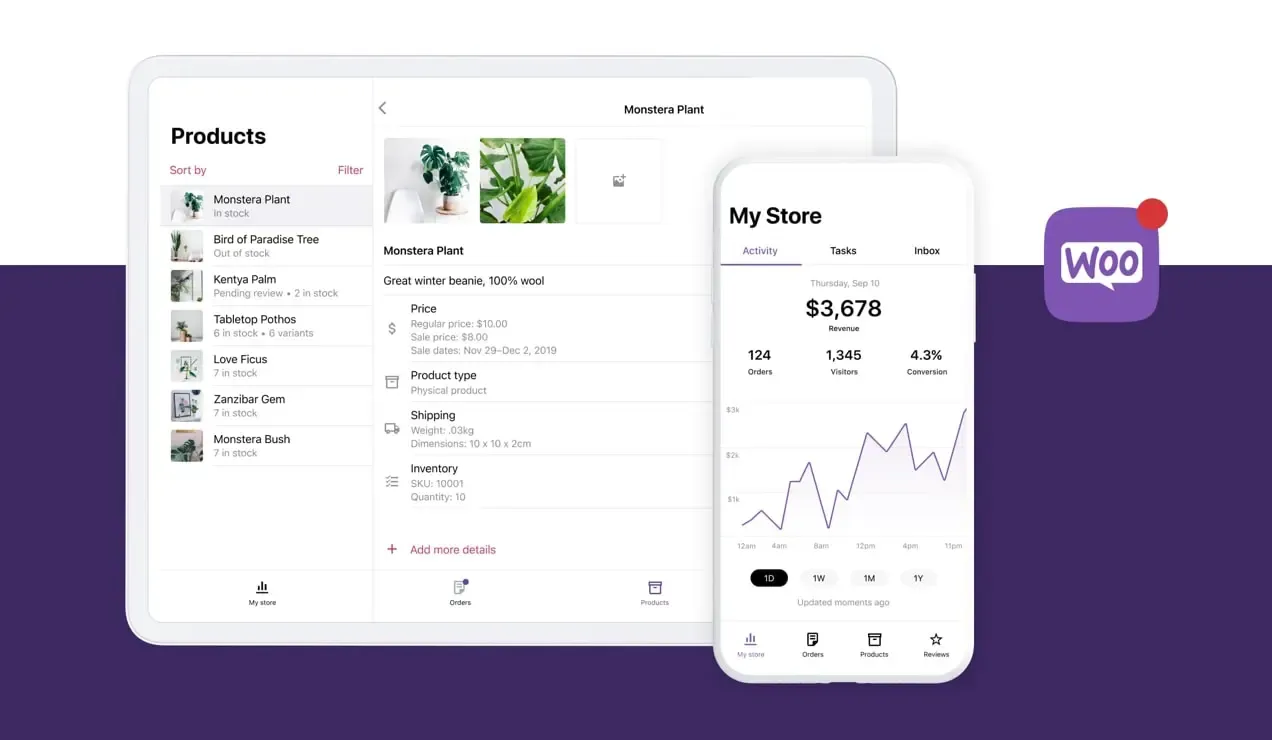
In summary, WooCommerce offers extensive customization and optimization options, allowing you to tailor your store’s performance and mobile capabilities to your specific needs. Its integration with WordPress and a wide range of plugins provide powerful tools for optimizing site speed, SEO, and mobile experience.
Overall Evaluation
When comparing Shopify vs WooCommerce in terms of optimization and mobile apps, both platforms offer robust solutions, but they cater to different needs and levels of technical expertise.
- Shopify provides a user-friendly, optimized experience with a managed infrastructure, responsive themes, and a robust mobile app. Its built-in features and seamless integrations make it easy to ensure your store performs well and offers a smooth shopping experience across all devices. Shopify’s focus on simplicity and efficiency makes it an excellent choice for businesses looking to minimize technical complexities.
- WooCommerce, on the other hand, offers unparalleled flexibility and control. Its integration with WordPress and a vast plugin ecosystem allows for extensive customization and optimization. WooCommerce is ideal for businesses with specific performance and mobile requirements or those looking to leverage advanced optimization techniques, provided they have the technical expertise or resources to manage the customization.
The performance tests showed that WooCommerce is quite slow. The average page loading time for all monitored stores was 776 milliseconds, and the average cart page took 1.32 seconds to load. Shopify’s web pages load in a mere 309 milliseconds – much faster than the ideal loading time of 500 milliseconds that Google recommends! Therefore, Shopify provides an excellent overall user experience.
Shopify’s app is easy to use, mobile-friendly, and lets you see your store’s sales, most popular customers, orders, and abandoned checkouts. You can also edit product details like lists, inventory collections, gift cards… Shopify’s Reports section is incredibly useful. All the analytics you need are there, including the ability to create custom reports. The WooCommerce app’s installation is much more complicated when you compare it to Shopify. Before you’re able to use it, the Jetpack plugin must be installed. After that, logging in to the app with your WordPress.com account information will be compulsory.
Conclusion: WooCommerce vs Shopify?
Our in-depth comparison of Shopify vs WooCommerce has explored various aspects, including ease of use, pricing, initial setup, product presentation and features, customer logins and checkout options, shipping cost settings and carrier integration, scalability and growth, marketing capability, and optimization and mobile apps. Both platforms offer robust solutions, but they cater to different needs and levels of technical expertise.
Shopify
- User-friendly, intuitive interface with a streamlined setup process.
- Ideal for users preferring a straightforward, managed solution without extensive technical knowledge.
- Subscription-based pricing model includes hosting, security, and maintenance, offering predictability in costs and simplicity in management.
- High-quality themes, intuitive drag-and-drop editor, and robust product management tools.
- Simplifies the checkout process with features like guest checkout, social login, and one-page checkout, enhancing user experience and conversion rates.
- Built-in carrier integrations, real-time shipping rates, and discounted shipping options for easy shipping management.
- Scalable, managed solution with automatic updates, robust infrastructure, and dedicated support facilitates business growth.
- Comprehensive suite of built-in marketing tools and seamless integrations with third-party apps for effective marketing campaigns.
- Optimized performance with managed infrastructure, responsive themes, and a robust mobile app for a seamless experience across devices.
WooCommerce
- Offers greater flexibility and customization but requires a higher level of technical expertise and involvement in setup and management.
- Free plugin model involves various costs, including hosting, domain registration, SSL certificates, themes, plugins, and potentially development fees.
- Extensive customization options and integration with a vast array of WordPress themes and plugins for tailored product presentation.
- Extensive options for customer logins and checkout customization, may require additional plugins and technical expertise to optimize.
- Provides extensive shipping options through plugins, allowing for highly customized shipping setups, but requires careful management and optimization.
- Open-source nature and integration with WordPress allow for extensive customization and scalability, ideal for businesses with unique requirements.
- Powerful SEO capabilities and a wide range of plugins enable highly tailored marketing strategies.
- Flexibility allows for extensive optimization and mobile capabilities, but requires careful management and technical expertise to leverage these tools effectively.
If you prefer a user-friendly, managed solution with minimal technical involvement, predictable pricing, and robust built-in features, Shopify may be the right choice for you. However, if you require extensive customization and control, have the technical expertise or resources to manage hosting and optimization, and need a highly tailored eCommerce solution, WooCommerce may be the better option.
We know that choosing the right platform for each business is not an easy task. Hopefully, this article can help you know the pros and cons of Shopify vs WooCommerce and you can identify and evaluate the most relevant platform.
With a proven track record of transforming eCommerce experiences for clients worldwide, Magenest offers a seamless blend of innovation, expertise, and personalized solutions. By subscribing to our Shopify development services, you gain access to a team of dedicated professionals committed to boosting your store’s performance, enhancing user experience, and driving sustainable growth. Don’t miss out on the opportunity to revolutionize your eCommerce journey.




